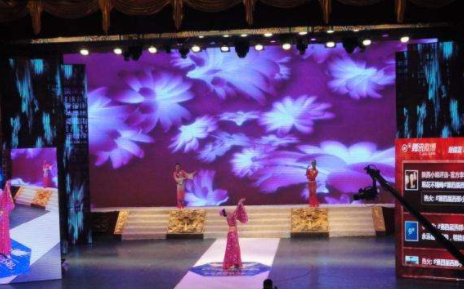
A good LED display requires a very good performance in terms of design and performance. The quality of LED display is a problem that all customers are very concerned about now. Let me talk about it today, the important factors of LED display quality:
Some manufacturers do not observe, replacing the LED- specific backlight ink with a general white text ink, which is equivalent to adding a layer of hard paint to seal the heat. After many failures, manufacturers have accepted new ideas and processes, focusing on the overall cooling program. The aluminum substrate is replaced with a special heat-dissipating white backlight ink for LED . If a yellowish backlight ink is specified, the reflectance will be increased to 91% . Spraying between the copper foil substrate and the aluminum substrate with a soft ceramic heat-dissipating paint can reduce the amount of the Japanese thermal conductive film and increase the breakdown voltage at a very low cost.

Whether the LED lamp is stable, the quality is good or not, and the heat dissipation of the lamp body itself is important. At present, the heat dissipation of the high-brightness LED full-color screen on the market usually adopts natural heat dissipation, and the effect is not satisfactory. The heat dissipation is not ideal, and the life of the lamp itself will be affected.
The application of heat dissipating materials in the industry should not only focus on the heat dissipation coefficient, but ignore the thermal resistance value. If you only see a certain heat sink, heat sink, heat sink or thermal film with a good heat dissipation coefficient, you can think that you can conduct high heat out, which may be disappointing. It is expected that the temperature will drop, the light will not decay due to overheating, the life of the street lamp can be effectively extended, and the acceptance will pass smoothly. It may not happen.
Etching the tin from the substrate line, coating the large-screen backlight ink of the LED display screen, baking the upper protective film into the oven, leveling the whole board, attaching the thermal conductive film, and then bonding the heat-dissipating module with adhesive or lock. In a cumbersome process, it can be found that a material with better thermal conductivity is also defeated by the thermal resistance. The air, the non-closed pores of the joint, the heat-dissipating gasket, the powder formed by the evaporation of the heat-dissipating oil, and the film thickness of the multi-layer thermal conductive film all form a thermal impedance. These multiple levels of thermal resistance can impede the rate of heat conduction, heat conduction is very slow, and even conduction to the surface of the luminaire, resulting in a cumulative increase in heat. The white backlight ink on the surface of the aluminum substrate should not only be reflective, but also can disperse the heat of the lower layer through the backlight of the surface.
To protect the LED display or luminaire from the climatic environment, the heat is effectively conducted out, and the way to save money is to spray a soft ceramic heat-dissipating paint. Only from the perspective of the overall heat dissipation concept, reducing the thermal resistance interference is the key to the acceptance of LED large lamps. The lamp protection cover should abandon the traditional electroplating or baking varnish. These two methods will expose the heat to the outdoor LED display in the luminaire for a long time and expose it to the natural environment. When the outdoor temperature is high, the LED display heat dissipation becomes an important issue. The LED display heat dissipation indirectly affects the service life of the LED display , and even more, directly affects the normal use and safety of the LED display screen.
WARNING!
Do not plug two or more meters together!
IMPORTANT
Don't plug in an appliance where the load exceeds 16 Amp. Always ensure the plug of any appliance is fully inserted into the meter outlet. If cleaning of the meter is required, remove from mains power and wipe meter with a dry cloth.
KEYBOARD DEFINITION
1). SET: Set price with button UP.
2). MODE: Exchange display state.
3). UP: Set price combined with button SET.
GENERAL FEATURES
1).Display line power.
2).Display and memory accumulative total power quantity.
3).Display and memory total power charge of price.
THE DATA DISPLAY
Press MODE button the data displays as follows:
W →KWh →PRICE →COST/KWH
↑_ _ _ _ _ _ _ _ _ _ _ _ _ _ _ _↓
1). Plug in socket and power on, the meter will display real power.
2). Press MODE button once again and release, the meter will display accumulative KWh.
3). Press MODE button once again and release, the meter will display total power charge.
4). Press MODE button once again and release, the meter will display COST/KWH.
SETTING PRICE OF COST/KWH
1). Press SET button during display COST/KWH,the first digital COST/KWH flash, press UP button to set it.
2). Press SET button once again and release, the second digital COST/KWH flash, press UP button to set it.
3). Press SET button once again and release, the third COST/KWH flash, press UP button to set it.
4). Press SET button once again and release, the fourth COST/KWH flash, press UP button to set it.
5). Press SET button once again and release, the radix point COST/KWH flash, press UP button to set it.
DATA CLEAR
Press and hold MODE button for 5 seconds will clear KWH,PRICE and COST/KWH data.
Power Meter Plug Energy Monitor,Backlight Power Metering Socket,Blue Backlight Power Meter Socket,Multi-functional Backlight Power Meter Socket
NINGBO COWELL ELECTRONICS & TECHNOLOGY CO., LTD , https://www.cowellsockets.com